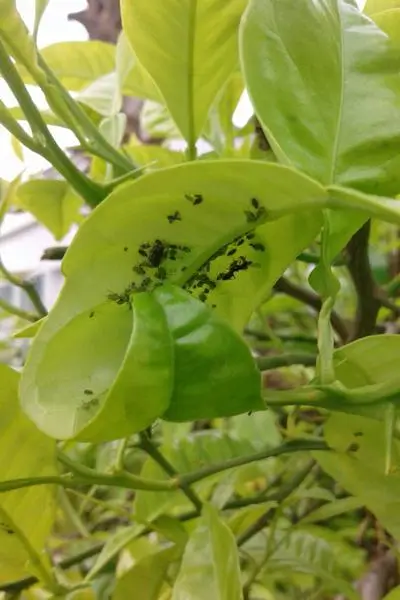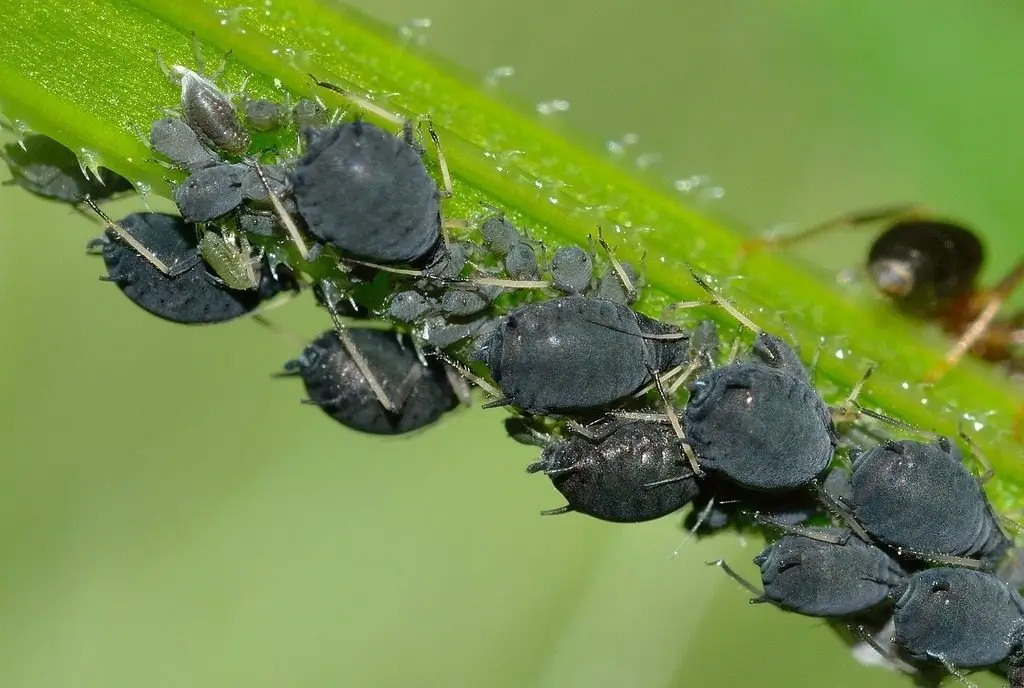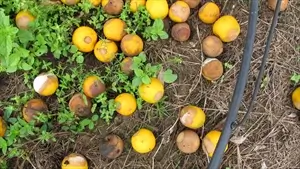Citrus plants are a favourite among home gardeners and commercial farmers alike. However, they are not just popular with people; pests love them too. Among the various insects that can severely attack citrus plants, sap-sucking pests are some of the most damaging.
3 Sap-Sucking Pests That Cause Severe Damage to Citrus
1. Aphids in Citrus
Damage Symptoms of Citrus Aphids
Aphids are tiny, soft-bodied insects that feed on the sap of citrus leaves and stems. They cause a range of problems, including:

- These citrus aphids suck the sap from the underside of the leaves, causing the leaves to deform and curl. The attack can also lead to stunting and twisting of twigs and shoots. As aphids feed on the leaves it can cause nutrient loss which can make the leaves wilt and turn yellow.
- And along these damages are you seeing buds and flowers fall prematurely? then it is citrus aphids in work. Symptoms caused by citrus aphids won’t just stop here, you can also observe sooty mold growth on the leaves which is due to excretion of a sticky substance called honeydew.
- Keeping these pests under control is important as severe aphid infestations can affect the size, colour and taste of citrus fruits.
Identification of Citrus Aphids

Citrus aphids can be identified by their pear-shaped bodies, long legs and antennae. They have two tube-like structures called cornicles on their rear. They come in various colours, including green, yellow, brown, red and black and some may have a waxy or woolly coating. Aphids thrive in mild temperatures (15-25°C) and moderate humidity (50-70%).
How to Treat Citrus Aphids?
- To effectively manage citrus aphids consider the following measure, however, please consult the experts before taking chemical sprays
- Place yellow sticky traps in the citrus orchard to monitor the aphid population and encourage the population of beneficial insects like ladybugs, lacewings and syrphid flies as they prey on citrus aphids.
- If the damage is not controlled apply insecticides such as Thiamethoxam (200 g / ha) or Imidacloprid (100-150 ml / acre) an if the severity of the pests increases spray with insecticides containing Methyl Demeton (2 ml / lit of water) or Dimethoate (2 ml / lit of water).
2. Citrus Mealybugs: Serious Sap-Sucking Pests
Symptoms of Mealybugs in Citrus
Citrus mealybugs are another serious sap-sucking pests affecting citrus plants.

Symptoms of infestation include:

- The citrus mealybugs mainly cause defoliation and dieback in the citrus, this is because mealybugs inject toxic saliva as they feed on sap
- The damage won’t just limit to defoliation but also causes discolouration and splitting of the fruits
- The mealy bugs in citrus also secrete honeydew which causes sooty mold development and these attract ants
- If the severity of the pest infestation increases it directly impacts plant vigour and leads to fruit loss
Citrus Mealybugs: Identification of the Pest
Mealybugs are identified by their white, waxy coating and filaments around their margins. They lay eggs in clusters covered with a cottony mass. Nymphs are amber-coloured and have a waxy coating. Adult males are winged and without mouthparts, while females are wingless with a flat body.
Tips to Control Mealybugs in Citrus
- The most important control measure is sanitisation where you should collect and destroy damaged leaves, twigs and stems.
- Introduce natural predators like ladybird beetles at a rate of 10 beetles per tree.
- If the pest incidence is high, spray with insecticides such as Dichlorvos (0.2%) combined with fish oil rosin soap (25 g / lit) or apply soil treatments with Chlorpyriphos near the tree trunk.
3. Fruit Moth in Citrus
What Do Fruit Moth Symptoms Look Like?
Fruit moths are a significant pest of mature citrus fruits. Symptoms of fruit moth damage include:

Rotting symptoms appear on the fruit wherever adult moths pierce the fruits to suck the juice. These spots also act as infection sites for bacteria and fungi. Lack of care leads to fruits having reduced quality and are unmarketable.
Fruit Moth in Citrus: Pest Identification
Fruit moths can be identified by their larvae and adult forms. Larvae are orange with blue and yellow spots on a dark, velvety body. Adults are stout moths with orange-coloured wings. The pest is active from June to September, completing several generations during this period.
Methods to Control Fruit Moths in Citrus
- To keep the pests under control always keep the orchard clean, destroy the alternate host plants and remove faller fruits. Install light traps in the orchard to attract and capture the adult moths.
- To attract and kill fruit moths in citrus, use poison bait made of fermented molasses and malathion.
- Also, you can spray chemicals containing malathion or Dimethoate (1 ml / lit of water) on weeds around the orchard to target young stages of the pest.
Keeping the orchards free of sap-sucking pests such as aphids, mealybugs and fruit moths in citrus plants is crucial for maintaining healthy and ensuring high-quality fruit production. Follow the above mentioned practices and always remember to combine cultural, biological and chemical practices to minimise the harm to the environment and maximise the health of your citrus plants.